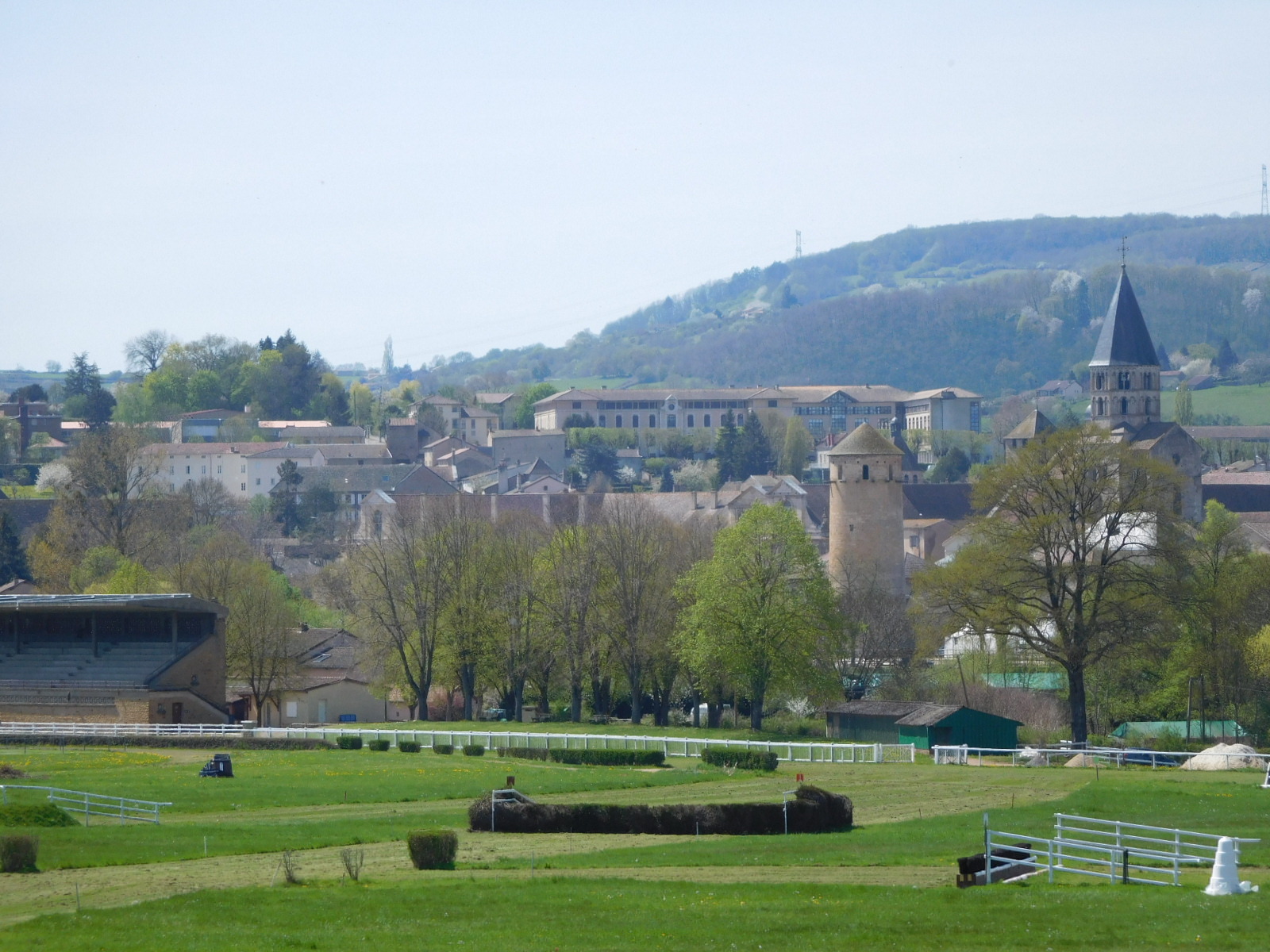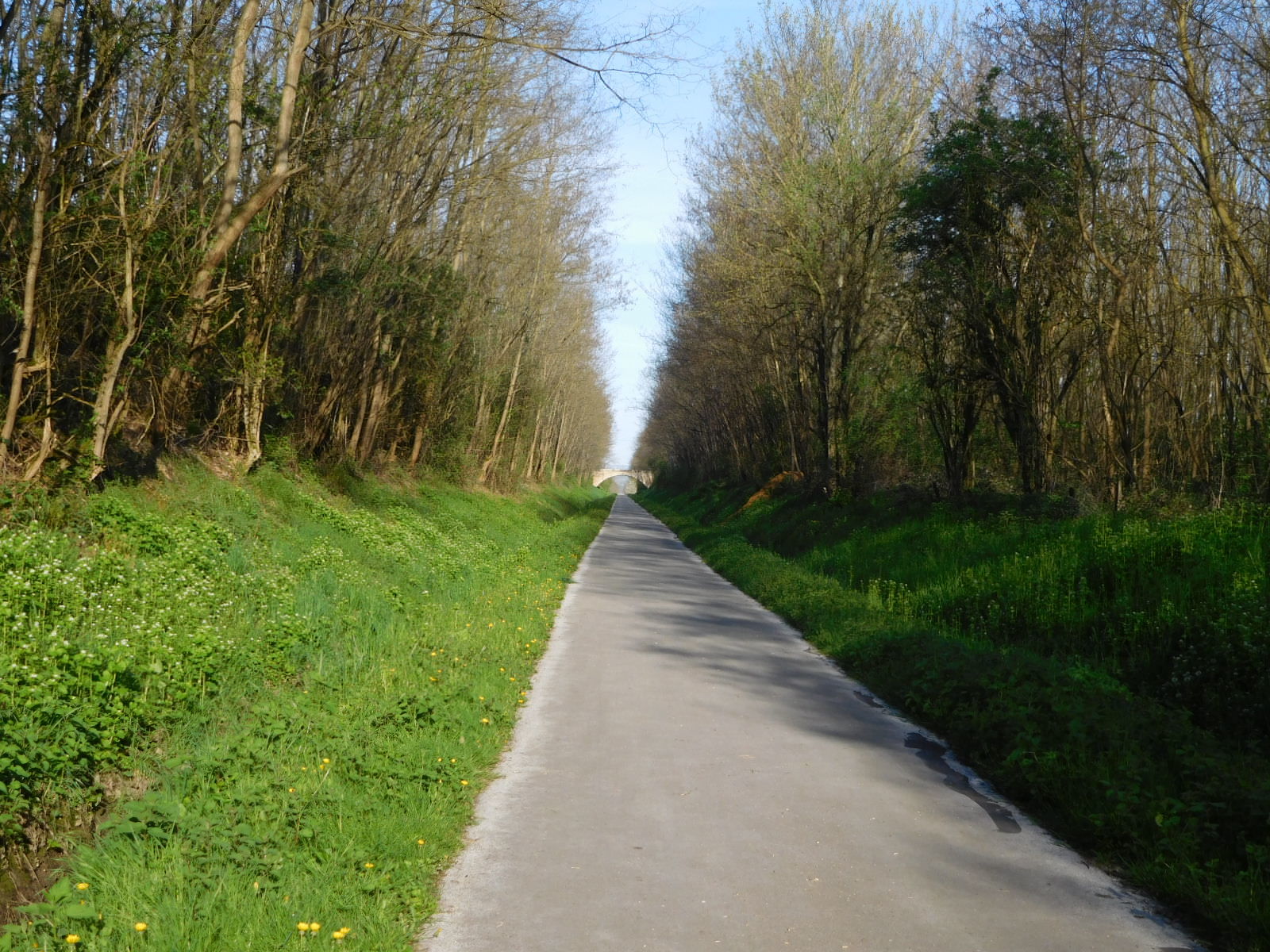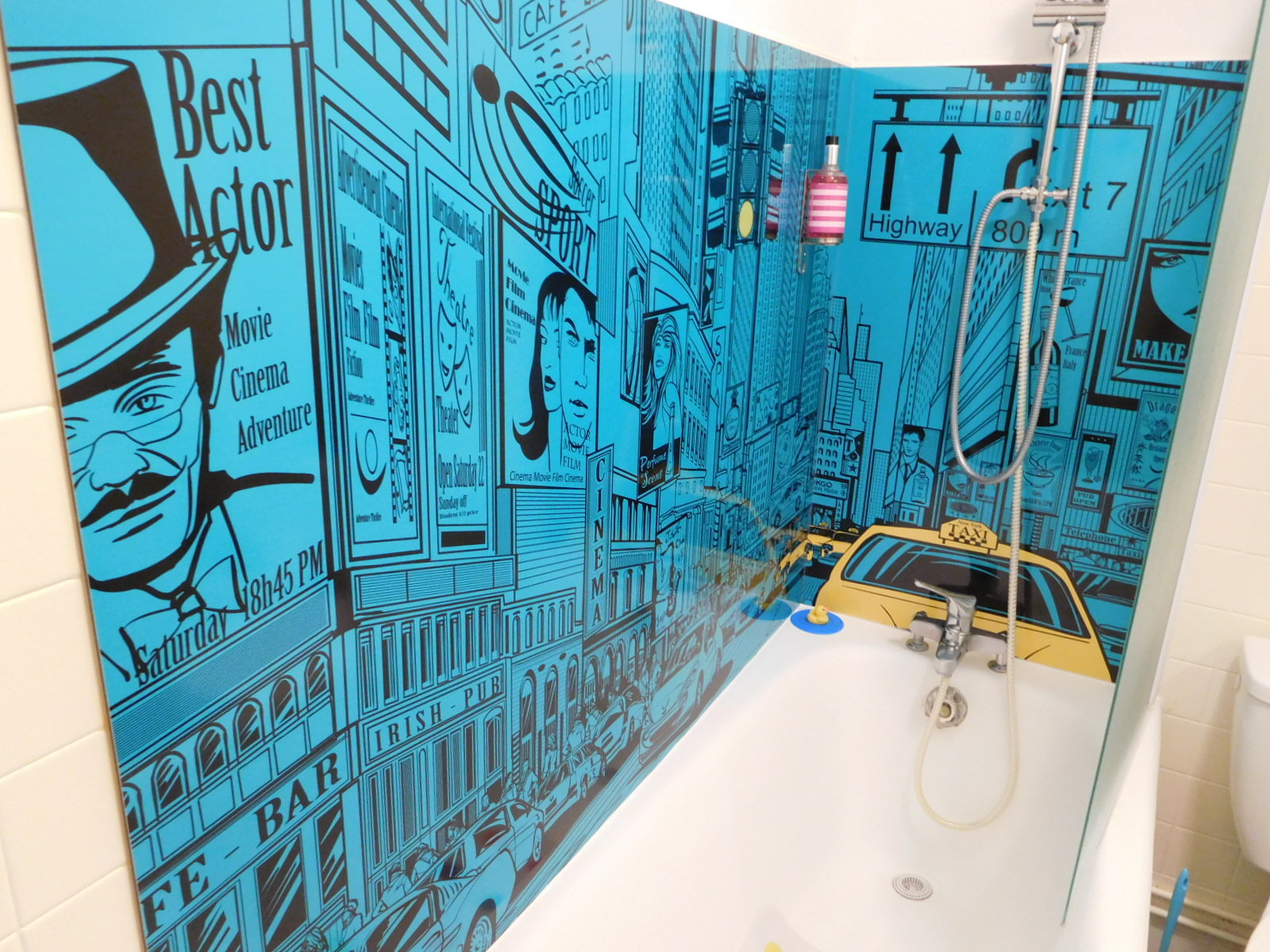April 18, 2018
Day 23: Chalon to Macon
The run from Chalon down to Macon has the distinction of being on protected cycle way for the whole distance. In fact, for about 55 km the track is an actual rail trail, and the towns you pass are marked by former station buildings.

| Heart | 2 | Comment | 0 | Link |

| Heart | 5 | Comment | 0 | Link |
The route also passes by some very interesting spots, at least five that we had identified. Although we knew that the whole day would be long, we at least started out with the goal of seeing them all, even though each would mean a small detour and in this region, a climb.
Our first stop was Saint-Gengoux-le-National. The origin of the name and the background of the town is explained here:
The town, for a few streets at least, has a real medieval feel. The buildings are textured stone and of course the passages are narrow. The church was also (unusally) narrow, and was "cluttered" by many statues. My photo is of Joan of Arc, which is not really special. Joan seemed to swarm all over France in her short life, and she is featured in many churches.
Maybe of equal interest to the medieval surroundings was the "Casino" mini market we found in the town. So much unlike a small grocery back home, Casino has good quality stuff, strangely including baguettes. While waiting outside with the bikes I had a chance to look at the produce for sale, on an outdoor rack.
They had strawberries from the Garonne region, melons from Morocco, apples from the Loire, asparagus from Greece, and oranges from Spain. It was a bit of a European tour just checking them out.
Since I am always whining for bakery goodies, Dodie picked one up for me. Is there a message in her choice? "Yes!", she says.
The next major stop was Taizé. This small spot up a hill off the greenway caught our attention from the fairly long writeup it got in Rick Steves' France guide. Steves calls Taizé the latest in European monasticism, a booming Christian community with thousands of mostly young pilgrims. Steves held Taizé forth as similar in drawing power to Cluny a thousand years ago (and our next stop today).
So we climbed the darn hill and found - as close to nothing as a casual tourist can normally come up with. There were some large empty parking lots, maybe a revival style large white tent, and many low buildings that seemed be dormitories. There was a fair smattering of people walking about - they seemed to be going or coming from dormitories. And some were lined up to receive lunch. Overall, it looked like a small folk festival minus the music, and the day before the main event.
Probably we missed the point, or didn't see the key sights, or missed the 100,000 people who are said to come for prayer annually. Oh well.
Cluny was some thing entirely else again. The abbey of Cluny was the head office of a great chain of Benedictine monasteries in Europe. Based on the ideas of St. Benedict (5th century), Cluny abbey was first established in the 10th century. It was then in the 11th and 12th that it took off, and became the centre of a vast network. At the peak there were 10,000 monks in the network, and 1000 monasteries. Cluny depended on the leadership of its abbot, and the fortunes ebbed and flowed with the skill of these men. Four of the first six abbots made saint - a good indicator.
The church buildings at Cluny went through many gernerations, or changes, and these have been designated Cluny I, II, and III. III is obviously the last. The end came in 1789 with the French Revolution, when the place was trashed. Stones from the buildings were later used in construction of Napoleon's stables, nearby.
Now, in more understanding times, Cluny has become a protected monument. Rather than cart off stones, you now get to pay €8 to look at the remains.

| Heart | 1 | Comment | 0 | Link |

| Heart | 0 | Comment | 0 | Link |
Heading south from Cluny one runs into a "hill" called Bois Claire. This is not a mountain or a mountain pass, but if you cycle over it you sure will notice the 15% grades. Fortunately there was a rail tunnel through it, and this was restored in 2014 as part of the Voie Verte. Using the tunnel, you still run into some 15% grades, but presumably fewer. The tunnel is closed in winter to protect a colony of bats that live inside. The opening day is April 15, so we made it.
The tunnel is 1.6 km long and ice cold, as it the way with tunnels. This is very reminiscent of the Hiawatha rail trail tunnels in Idaho, except that this one is lighted over its second half. )Actually maybe it's supposed to be lighted the whole way - there was a sign warning that the lights could go out anytime, so be ready. What we found as half the lights on might well have been half the lights off.)
The gradual grades of the rail trail and the steeper bits in towns and around the tunnel had us really tired out, and also short of time. So we reluctantly abandoned some of the other stops we had had in mind. One of these was the 10th century chateau Berzé le Châtel and another was the perched village of La Roche Vineuse. Then there was the Chapelle des Moines, which has 12th century Romanesque mural paintings.
We have to tell ourselves that we will come back to see all these spots. And maybe it will be, since this stretch is a very central cycle route connector.
Our hotel room in Macon (in the Concorde, a little out of downtown, 69 euros) held some special interest (other than the tub, which given how tough we found the ride was itself very interesting to us). The room had been decorated with a unified theme of red and white. It also included some quirky bits, like the supplied bottle opener, the bathroom sink plug, a rubber duckie bathtub stopper, and a toilet roll dispenser in the shape of a camera. One thing I studied was the tub surround, which was in the form of a mural depicting New York city. There were Yellow Cabs and billboards advertising cosmetics or chinese food, etc. It looked like a good stylized representation at first. But soon I could see that this was a French conceived mural. A freeway exist sign gave the distance in meters, an ad for French wine had the spelling "whine", and an opening time was given as "18h 45 p.m.". In effect it was a "what's wrong with this picture" situation. Great when soaking in the tub. Maybe they did it on purpose.
Today's ride: 87 km (54 miles)
Total: 1,413 km (877 miles)
| Rate this entry's writing | Heart | 9 |
| Comment on this entry | Comment | 0 |












